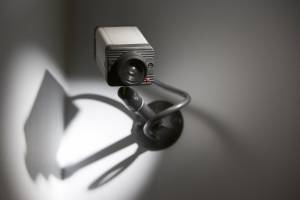If you watch crime procedurals on television, you’re aware of facial recognition software. It’s being used in many different venues these days, from cruise ships to casinos. It’s been reported that most police agencies in Canada are using the technology in crowds to identify criminals or rioters who could create potential problems. One place not many people would expect to be scanned is in their religious building, but according to many different sources, church facial recognition software is being implemented to help the staff count and identify who is worshipping and who isn’t.
Proponents of Facial Recognition Software
One organization, based in Israel, created a software specific to churches called Churchix. Reportedly, it provides services to about 30 churches around the world, although it has refused to share which specific groups use the technology. It helps the church keep a roll call of people not just at services, but at every event. First, the church creates a database of pictures of their members. During worship, a camera can move through the crowd and keep track of who is in attendance.
Supporters report that this cuts down on administrative duties for the staff. This lets the church get an accurate count of who is in church and who isn’t. It also helps the staff get to know people better by associating a picture with a name. Another purported benefit is that of facial tagging on social media or in newsletters. The editor can more easily identify people in photos, giving credit where credit is due. The technology can also help with demographics at events, not only getting a head count, but seeing the ages, gender, and even race of those in attendance.
Critics of the Technology
If you were to go back in time, you’d probably hear a discussion about whether a church should have a telephone or electricity. There’s always been opponents of newer technology, especially in the church. It wasn’t too long ago that people were upset with their administrations for keeping a database of members on the computer.
The biggest concern with facial recognition software in the sanctuary is a loss of privacy. That’s not to say it’s the only one. In a faith-based setting, there’s certainly the lack of personal interaction. Would the staff neglect direct contact in lieu of facial imaging? Going back to the privacy concern, one potential problem is in cross-matching. Your face print taken by the religious organization might be used for another purpose without your consent. It’s a scary slippery slope, when you consider database-matching software or hackers in the equation.
Ask Questions Now
Interestingly, Churchix cites privacy concerns and doesn’t share the names of churches who are currently using the technology. In fact, it was intimated in one report that Churchix wasn’t even sure that the members of the church were aware that the leaders were using facial recognition software. If there’s a camera around, whether it be in the sanctuary or in a store, you should assume that the establishment is using facial recognition software.
Just three years ago, the Research Group of the Office of the Privacy Commissioner of Canada came out with a report about facial recognition software, and nowhere in the report does it even think about the technology being used in religious circles. There are certain places where we’ve always expected a modicum of privacy, but as religious organizations embrace the 21st century, this attitude may need to be reconsidered.
Before the use of this software is considered normal, it might be time to question it and put constraints on its use. It is a viable technology in certain circumstances. Digital imagery is becoming more accurate. There may be a use in religion to alleviate administration duties, but the community as a whole should be made aware of its use. It might be time to start a discussion in your faith organization about how your congregation will address this issue.



